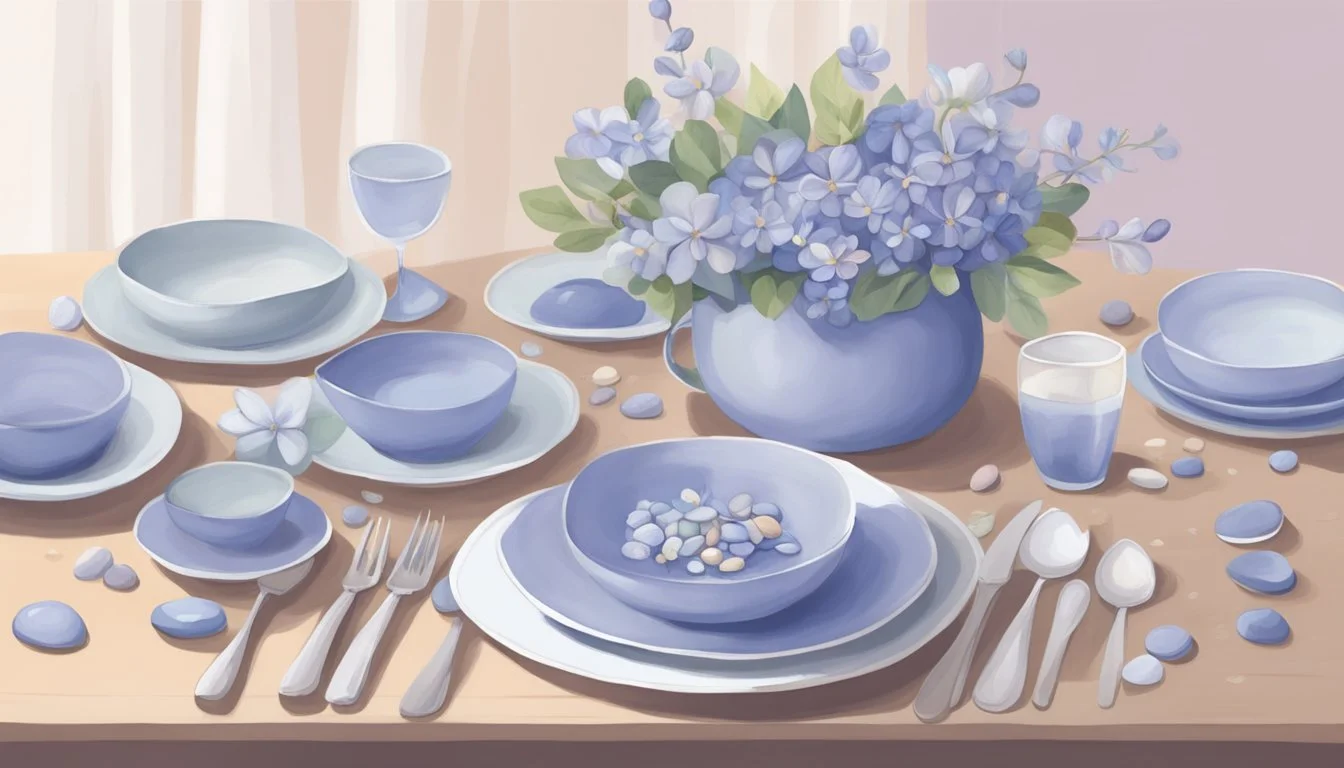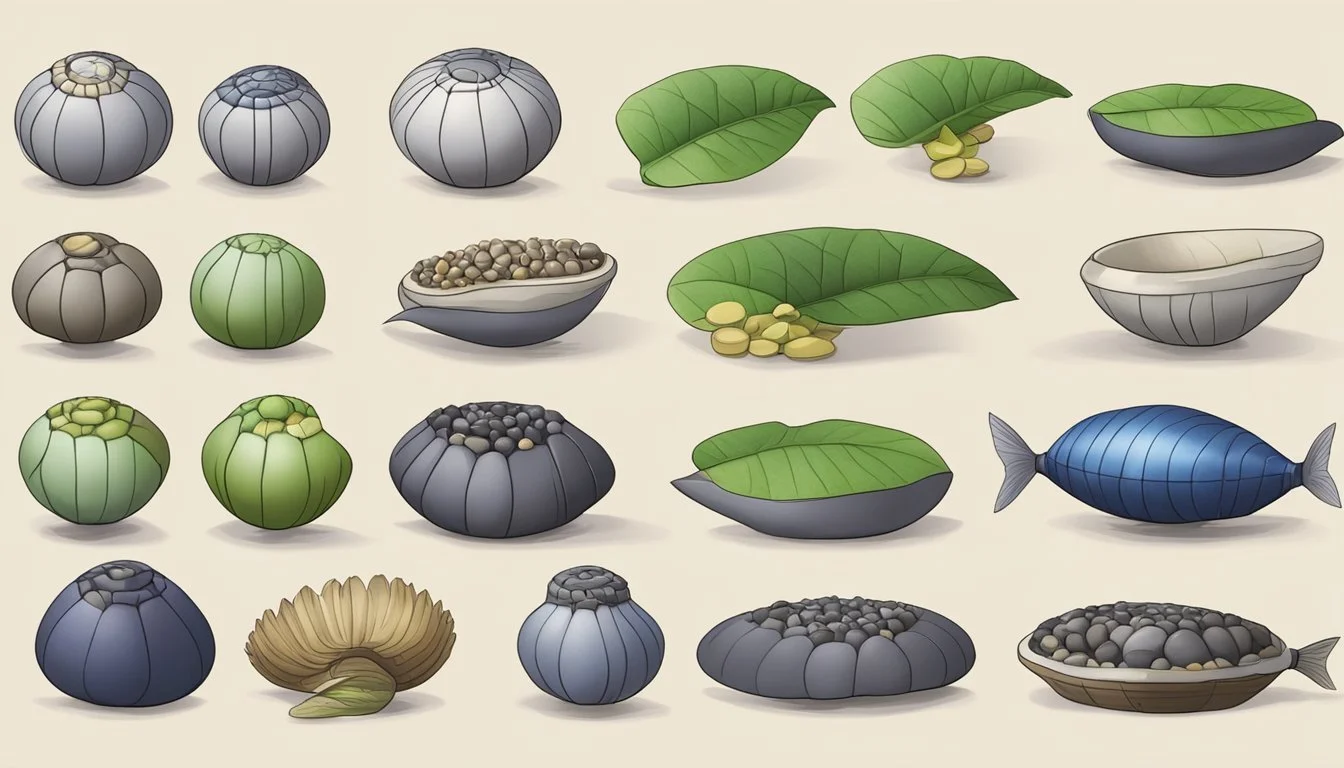Periwinkles Substitutes
Best Alternatives for Cooking and Gardening
Gardeners often seek alternatives to periwinkle (Vinca minor), a popular ground cover prized for its verdant foliage and charming flowers. Periwinkle can become invasive, making it crucial to explore native and less aggressive substitutes. Native plants thrive in local climates without threatening surrounding ecosystems, providing a sustainable and attractive solution.
Several plants serve as excellent replacements for periwinkle in various garden settings. For shady areas where periwinkle commonly thrives, consider carpet bugleweed (Ajuga reptans), which offers similar lush coverage and vibrant foliage. Full-sun alternatives include native grasses and clover, both providing excellent ground cover and ecological benefits.
Selecting the right plants for your garden involves understanding sunlight needs and growth patterns. Native plants not only enhance your garden's beauty but also support local wildlife and biodiversity. Embrace these sustainable alternatives to maintain a healthy, beautiful garden space.
Understanding Periwinkles
Periwinkles, members of the Vinca genus, are valued for their hardy nature and attractive evergreen foliage. They thrive in various conditions, contributing to their popularity as ground-cover plants in gardens and landscapes.
Botanical Overview
Periwinkles belong to the Apocynaceae family and are perennial plants. These flowering plants are native to Europe and Asia. Their low-growing nature makes them ideal for ground cover. They typically produce small, star-shaped flowers in shades of purple, blue, or white. The plants form dense mats, which can help prevent soil erosion and suppress weeds.
Varieties of Periwinkles
The two main species of periwinkles are Vinca minor (Lesser Periwinkle) and Vinca major (Greater Periwinkle). Vinca minor is renowned for its compact size, typically reaching only 4-6 inches in height. Vinca major is larger, growing up to 18 inches tall. Both produce vibrant flowers and have evergreen foliage. Some varieties may feature variegated leaves, adding visual interest to gardens.
Preferred Growing Conditions
Periwinkles thrive in a range of lighting conditions, from full sun to partial shade. They are well-suited to moist, well-draining soils but can tolerate periods of drought once established. Vinca minor is particularly shade-tolerant, making it an excellent option for less sunny areas. Ensuring proper soil drainage is crucial to prevent root rot and other moisture-related issues.
Choosing the right location and soil type will ensure healthy growth and vibrant blooms. Moist soil with good drainage is ideal for these plants. Regular watering helps establish new plants, after which they require minimal maintenance. Periwinkles' adaptability to different environments contributes significantly to their widespread use in landscaping.
Gardening with Periwinkles
Periwinkles, widely known as Vinca minor, are popular groundcovers prized for their adaptability and beautiful blooms. Success in growing these plants hinges on understanding their specific soil and sunlight needs, as well as effective water management and propagation techniques.
Soil and Sunlight Needs
Periwinkles thrive in a variety of soil types but prefer moist, well-draining soil enriched with organic matter. Adding compost can enhance soil fertility and structure.
They perform well in full sun to partial shade, making them versatile for different garden spots. While they tolerate full sun, they particularly excel in partial shade, maintaining their lush foliage and prolific blooms.
Water and Moisture Management
Proper moisture management is crucial for thriving periwinkles. Keeping the soil evenly moist without waterlogging is key.
During the growing season, especially in spring and summer, ensure consistent watering to promote healthy growth. Using mulch around the plants helps retain moisture and keeps the soil cool, reducing the need for frequent watering.
Propagation Techniques
Periwinkles can be propagated through division or stem cuttings.
Division involves separating an established plant into smaller sections, each with roots and shoots, which can be planted individually. This is best done in early spring or fall.
Stem cuttings are another effective method. Cut a healthy stem, remove the lower leaves, and root it in moist soil. Keeping the cutting in a humid environment encourages faster rooting.
Common Issues and Care
Periwinkles, while popular, face several challenges including diseases and pests, invasive tendencies, and maintenance needs. Proper care can mitigate these issues, ensuring healthy and manageable growth.
Diseases and Pests
Periwinkles are susceptible to several diseases and pests. Fungal diseases such as Phytophthora and Rhizoctonia root rot can be detrimental, especially in poorly drained soil. These fungi cause wilting, yellowing leaves, and root decay.
Pest infestations like aphids and spider mites can also affect periwinkles. These pests feed on the sap, leading to stunted growth and deformities. Root knot nematodes are another concern; they cause galls on the roots, impairing nutrient uptake. Effective management includes using disease-free planting material and avoiding mechanical injuries that can invite pathogens. Regular inspection and prompt removal of affected plants prevent the spread of diseases.
Invasive Potential and Management
Periwinkles, specifically Vinca minor, can become invasive. This aggressive growth is due to their ability to spread quickly through vegetative propagation. They can outcompete native species, leading to a monoculture which diminishes biodiversity.
To manage invasiveness, gardeners should regularly prune the plants and contain their growth within designated garden areas. Mechanical methods such as mowing can control the spread. For severe invasions, removing the entire root system is necessary. It’s advised to avoid planting periwinkles near natural woodlands or sensitive habitats. Using native alternatives like creeping phlox or carpet bugleweed can reduce the risk of invasive spread.
Caring for Mature Plants
Caring for mature periwinkles involves regular maintenance to keep them healthy and visually appealing. These plants thrive in both full and partial shade, making them versatile for various garden settings.
Watering practices should ensure the soil remains well-drained to prevent root rot. Established periwinkles are drought-tolerant but benefit from occasional deep watering, especially during dry spells. Pruning helps maintain air circulation, reducing the risk of fungal diseases. Removing dead or diseased foliage promotes healthy growth. Mulching around the plants helps conserve moisture and suppress weeds.
By following these care guidelines, periwinkles can remain a vibrant part of the garden without becoming a burden.
Alternative Plants to Periwinkles
When considering alternatives to periwinkles, it is essential to look at plants that offer similar benefits such as ground cover, shade tolerance, and ornamental appeal. Here are some specific options that cater to different needs in the garden.
Shade-Tolerant Substitutes
For gardens with shaded areas, selecting plants that thrive in low-light conditions is crucial. Carpet Bugleweed (Ajuga reptans) is an excellent choice. It grows well in full shade and provides beautiful, variegated foliage. Another option is Wild Ginger (Asarum canadense), known for its heart-shaped leaves and ability to grow in dense shade.
Pachysandra terminalis, or Japanese Spurge, also performs well in shaded areas. Its evergreen leaves and slow-spreading habit make it a reliable groundcover for difficult spots.
Ground Cover Alternatives
Ground cover plants act as living mulch and help suppress weeds. Creeping Juniper (Juniperus horizontalis) is a robust alternative to periwinkle. This plant thrives in a variety of soils and requires minimal maintenance. Another effective choice is Lysimachia nummularia (Creeping Jenny), which quickly spreads to form a dense carpet and works well in both sun and shade.
Epimedium, often called barrenwort, also serves as an excellent ground cover in shaded areas. It is valued for its drought tolerance and attractive, heart-shaped leaves.
Ornamental Varieties
For those looking for ornamental alternatives, Lenten Rose (Helleborus orientalis) stands out with its early spring blooms and evergreen foliage. Flowering plants like Heucheras (Coral Bells) provide vibrant leaf colors and attractive flower spikes that can enhance any garden's appeal.
Another ornamental option is Hosta, renowned for its large, decorative leaves. Hostas thrive in afternoon shade and are available in numerous varieties with diverse leaf shapes and colors. These plants not only replace periwinkles effectively but also add significant aesthetic value to the garden.
By choosing the right alternatives, gardeners can maintain or enhance their garden's beauty while ensuring environmental compatibility.
Landscaping with Periwinkle Substitutes
When landscaping with substitutes for periwinkle, it’s essential to consider their suitability for garden beds, containers, and erosion control. These substitutes offer versatility in various settings and climates, providing both aesthetic appeal and functional benefits.
Integrating into Garden Beds
Substitutes like carpet bugleweed (Ajuga reptans) and golden star (Chrysogonum virginianum) perform well in garden beds. Carpet bugleweed has variegated foliage and thrives in shady or partially sunny areas. Golden star is another great option for low-maintenance garden areas, blooming with bright yellow flowers in spring.
These plants adapt well to different soil types, including clay, and are handy for filling gaps in garden beds. Their low-growing nature helps cover the ground quickly, preventing weeds from taking over.
Container and Basket Planting
For container and basket planting, opt for plants like creeping jenny (Lysimachia nummularia) or English ivy (Hedera helix), which can handle the confined space of pots, hanging baskets, or window boxes. Creeping jenny offers a vibrant green or golden hue, perfect for spilling over edges.
English ivy, known for its hardy leaves, fits well in containers and can withstand various weather conditions. Both require well-drained soil to avoid root rot and grow well with moderate watering. This makes them low-maintenance choices for decorative potting.
Preventing Erosion with Substitutes
To prevent soil erosion in natural areas or sloped gardens, consider substitutes like creeping phlox (Phlox subulata) and sweet woodruff (Galium odoratum). Creeping phlox forms a dense mat, blooming in a variety of colors in the spring, ideal for stabilizing soil on slopes.
Sweet woodruff thrives in shady areas and spreads rapidly, creating a dense ground cover. These plants have strong root systems that help anchor the soil, reducing erosion. They also adapt well to different soil types, making them versatile choices for controlling soil erosion in various landscapes.
Environmental Considerations
Choosing substitutes for periwinkle requires understanding their impact on local ecosystems and ensuring the plants selected do not become invasive species.
Impact on Local Ecosystems
Invasive species like periwinkle are known to disrupt local ecosystems. They often outcompete native plants for resources such as sunlight, water, and nutrients.
Gardeners should be aware of the negative impact that invasive plants can have on natural areas, leading to reduced biodiversity. Native plants, on the other hand, support local wildlife, offering better food and habitat sources.
Selecting plants with non-invasive characteristics helps maintain ecological balance. Weather conditions and soil types should also be taken into account to ensure the chosen substitutes thrive without causing environmental harm.
Non-Invasive Plant Selection
Selecting non-invasive alternatives to periwinkle is crucial. Options like carpet bugleweed and native species are excellent choices. Carpet bugleweed offers variegated foliage and can thrive in shady areas, making it a direct substitute for periwinkle without the invasive risk.
Gardeners should prioritize native plants that adapt well to local climates and support the surrounding ecosystem. Hardy plants that do not become invasive can help in sustaining environmental health. Look for substitutes that are known to stay contained within their planted areas and do not spread aggressively.
Choosing appropriate plants will benefit the garden and the broader environment, protecting natural areas from potential invasions.
Conclusion
When looking for alternatives to Vinca minor (periwinkle) for ground cover, several options provide similar benefits without the invasive risks.
Carpet Bugleweed is an excellent choice for full-shade areas. Its variegated foliage adds visual appeal, making it a viable substitute for periwinkle.
Dicentra or bleeding heart complements existing periwinkle plantings. With heart-shaped flowers, it attracts beneficial insects like bees and butterflies, enhancing garden biodiversity.
These alternatives ensure attractive and eco-friendly ground cover options. Adapt your choices according to specific care needs and garden conditions to maintain a healthy, lush landscape.








